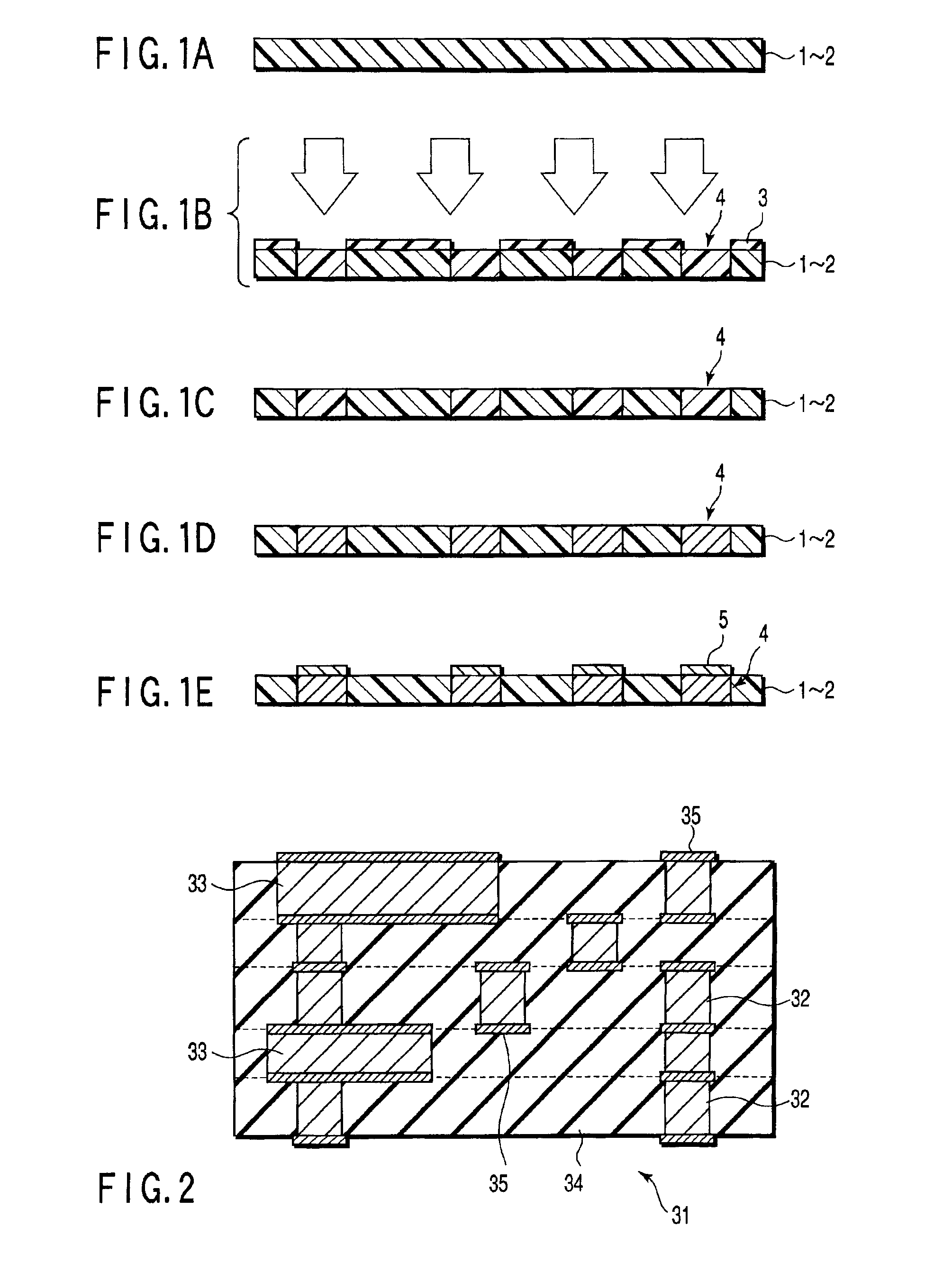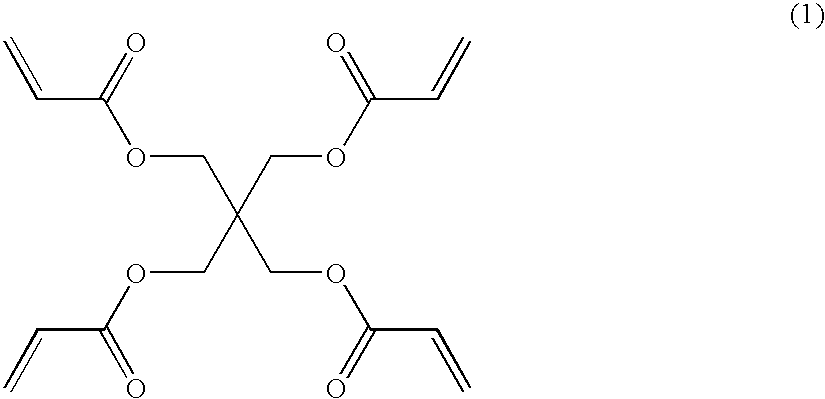Method of manufacturing composite member, photosensitive composition, porous base material, insulating body and composite member
a composite member and composition technology, applied in the field of composite member manufacturing, can solve the problems of difficult to form a fine wiring pattern and a three-dimensional wiring pattern, serious problems remain unsolved in this technology, and achieve the effect of low cos
- Summary
- Abstract
- Description
- Claims
- Application Information
AI Technical Summary
Benefits of technology
Problems solved by technology
Method used
Image
Examples
example i-1
[0269]In the first step, a photosensitive composition was dissolved in a mixed solvent consisting of 1% by weight of cyclohexanone and toluene so as to prepare a mixed solution. The photosensitive composition used for preparing the mixed solution contained a photosensitive compound of a polyfunctional peroxide ester, i.e., 3,3′,4,4′-tetra-(tert-butyl peroxy carbonyl)benzophenone (manufactured by Nippon Yushi K.K. under the trade name of BTTB), a crosslinkable polymer capable of a radical reaction, i.e., copolymer between polyvinyl ethylene PVE and polymethyl methacrylate PMMA (PVE:PMMA=1:3), and a coloring matter sensitive to a visible light of 3,3′-carbonyl bis(7-diethylamino cumarin) (manufactured by Hayashihara Biochemical Research Laboratory under the trade name of NKX-653). The weight ratio of the photosensitive compound, the crosslinkable polymer and the coloring matter contained in the photosensitive composition was 10:10:1.
[0270]On the other hand, prepared was a PTFE porous ...
example i-2
[0277]Prepared as an insulating body was a unwoven fabric made of glass fibers each having a diameter of 5 μm, having pores each having a diameter of 1 μm to 10 μm formed therein, and having a thickness of 50 μm.
[0278]Prepared was a composite member having a pattern of vias each having a diameter of 200 μm by using a photosensitive composition equal to that used in Example I-1 described above and by the procedure similar to that of Example I-1. Also prepared were wiring sheets and via sheets by using PTFE porous sheets each having an average pore diameter of 0.5 μm and a thickness of 20 μm by the procedure equal to that described previously.
[0279]Further, a multi-layered wiring board was prepared by using the resultant wiring sheets and via sheets. In the first step, a laminate structure was prepared by wrapping two wiring sheets each having an average pore diameter of 0.5 μm in a single via sheet, and the laminate structure thus prepared was arranged on both surfaces of the glass f...
example i-3
[0281]Prepared as an insulating body was an unwoven fabric made of PPS fibers each having a diameter of about 1 to 2 μm, which were prepared by a melt-blow method.
[0282]A composite member having a pattern of vias each having a diameter of 200 μm was prepared by using a photosensitive composition equal to that used in Example I-1 described previously and by the procedure equal to that employed in Example I-1.
PUM
 Login to View More
Login to View More Abstract
Description
Claims
Application Information
 Login to View More
Login to View More - R&D
- Intellectual Property
- Life Sciences
- Materials
- Tech Scout
- Unparalleled Data Quality
- Higher Quality Content
- 60% Fewer Hallucinations
Browse by: Latest US Patents, China's latest patents, Technical Efficacy Thesaurus, Application Domain, Technology Topic, Popular Technical Reports.
© 2025 PatSnap. All rights reserved.Legal|Privacy policy|Modern Slavery Act Transparency Statement|Sitemap|About US| Contact US: help@patsnap.com



